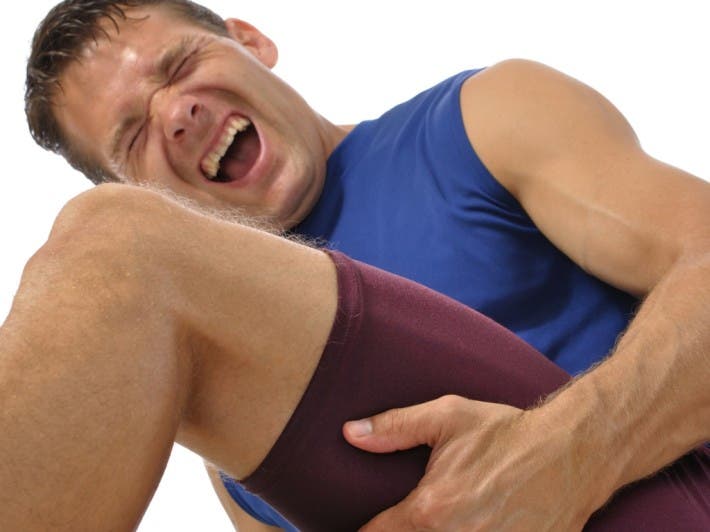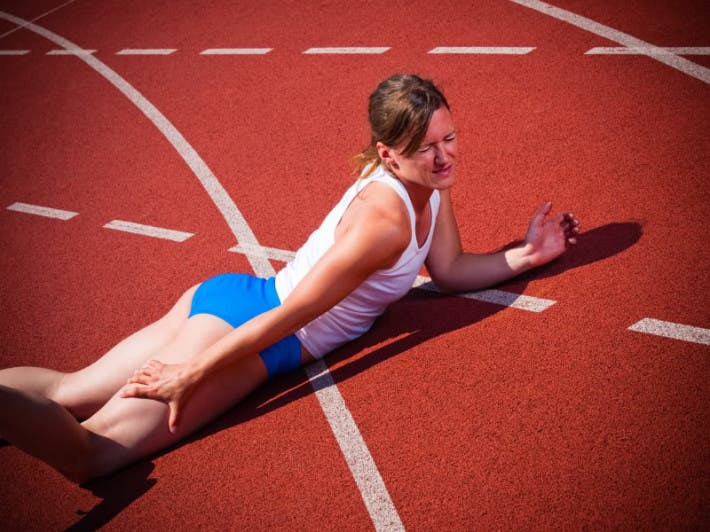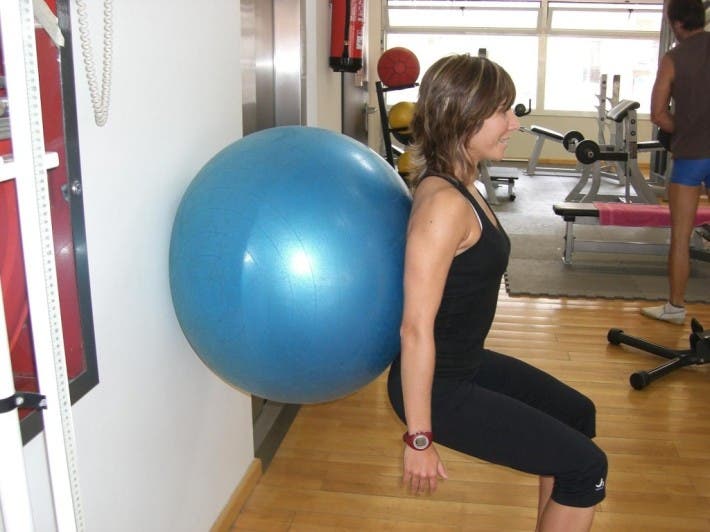Throughout the article we are going to distinguish two types of muscle injuries: with anatomical substrate ( LMConSA ) and without anatomical substrate ( LMSinSA ).
Types of injuries
Muscle injury with anatomical substrate
Injury in which the muscle fiber suffers structural damage (fully or partially breaks). There are three degrees of injury depending on the number of fibers injured:
- Grade I : Myofascial or fibrillar tear (A single muscle fiber is broken).
- Grade II : Multibrillar or fascicular tear (Several muscle fibers are broken, partial muscle tear).
- Grade III : Complete tendomuscular tear.

Muscle injury without anatomical substrate
Injury in which the muscle fiber does not suffer structural damage. The most common injuries are:
- Contractures : sustained muscle contraction. It appears in prolonged efforts and with bad posture.
- Cramps : severe painful spasmodic contraction due to muscle fatigue. Much more painful than the contracture. It appears during exercise at a specific time.
- DOMS : Scientific name for shoelaces. Late-onset muscle pain, usually 24 to 72 hours after exercise. At present, to respond to its appearance, it is committed to the theory of microinflammations of specific points of the muscle fibers.
- Stretches: Stretch excessive muscle that causes pain but not break.

Production mechanisms
Muscle injury with anatomical substrate
LMConSAs are produced by:
- Abrupt eccentric contractions.
- Violent muscle contraction plus stretching
- Incoordination between agonist-antagonist muscles.
- Direct trauma or “snack”.
* All of them are indirect mechanisms, except the last one (direct hit or sandwich) which is a direct injury mechanism.
Muscle injury without anatomical substrate
The LMSinSA, have their own reasons to occur:
- Contractures: muscle contracted in a sustained way due to overexertion, defense (immobilization of injured segments) and other causes, such as stress, nervousness or poor posture.
- Cramps: loss of mineral salts in prolonged exercises, due to fatigue (lack of muscle oxygenation), due to overload and long-lasting fixed position with ischemia. It appears at a specific moment of the exercise.
- DOMS: unaccustomed intense physical effort or after a period of rest.
- Elongations: due to an excessive stretching of the muscle as a result of overexertion and neuromuscular fatigue.
Accompanying symptoms
It is similar in both types of injuries, sharp pain appears and may be accompanied by functional impotence if the degree of affectation is severe. In lesions with an anatomical substrate, ecchymosis, depression of the muscle belly, and audible clicking (grade 3 lesions) are also common.
Attitude of urgencies
Muscle injury with anatomical substrate
- Reassure.
- RICE : Reverse, ice, compression and elevation.
- NSAIDs: non-steroidal anti-inflammatory drugs.
Muscle injury without anatomical substrate
- Contractures: massages, stretching, relaxation and heat.
- Cramps: gentle movements and stretches until severe pain subsides.
- DOMS: NSAIDs and gentle movements at low intensity.
- Elongations: rest and cold (in case a micro-tear is associated).
Usual medical treatment
Muscle injury with anatomical substrate
Anamnesis, observation and exploration by contractions and stretches, MRI, ultrasound and treatment itself. Treatment is generally divided into conservative (used in most muscle injuries) and surgical (used in grade 3 injuries).
Muscle injury without anatomical substrate
It is not necessary to go to the doctor except when the pain does not stop.
Recovery plan
Muscle injury with anatomical substrate
During sports recovery, although we must work on mobility (active and passive), endurance, strength, flexibility, progressive aerobic exercises, we must focus on the work of strength and strengthening of the muscles (especially the antagonist to establish harmony between the muscles) and in the achievement of the optimal ROM (Range of Movement of the Joint). Eccentric work is recommended to recover and prevent this type of injury. In the final stages of recovery we must introduce plyometric exercises.
Muscle injury without anatomical substrate
- Contractures: gentle stretching and adequate and progressive warm-ups.
- Cramps: good hydration, large movements, progressive warm-up and stretching.
- DOMS: Progressive warm-up, stretching and, most importantly, good sports planning.
- Elongation: Massage, rest and muscle enhancement.

Sports modalities with high risk of muscle injuries
- Football
- Athletics
- Volleyball
- Handball
- Rugby
- taekwondo
- Basketball
Bibliography
- Muscle injuries in sport. Balius, M. and Pedret, C. (2013). Editorial Médica Panamericana.
- Muscle injuries in sport. International Journal of Sports Sciences. Jimenez, D. (2006). Pages 55-67.
- Sports injuries. Prevention. Diagnosis. First aid. Rehabilitation. Hinrchis, H. (1999). Editorial Hispano Europea.
- Sports injuries. Diagnosis, treatment and rehabilitation. Bahr, R. and Maehlum, S. (2007). Editorial Médica Panamericana.
- ACSM Manual of Sports Medicine. ACSM. (1998). Editorial Paidotribo.
